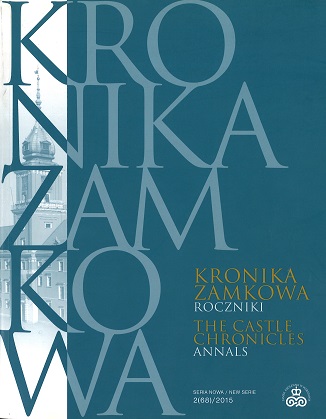Dwór króla polskiego w latach 1815-1830 i problem ceremonialnej oprawy "wskrzeszonej" monarchii w konstytucyjnym Królestwie Polskim
The vourt of the Polish king in the years 1815-1830 and the ceremonial framework for the 'resurrected' monarchy in the 'Congress: Kingdom of Poland
Author(s): Mikołaj Getka-KenigSubject(s): Fine Arts / Performing Arts, History of Art
Published by: Arx Regia® Wydawnictwo Zamku Królewskiego w Warszawie – Muzeum
Keywords: court; monarchy; chamberlain; coronation; Poland; Russia; ceremony
Summary/Abstract: The rule of Poland by the Romanovs during the years 1815–30 is a particularly interesting phenomenon in the field of political culture in post-partition Poland. It provides a wide scope for research into the difficulty of adapting the traditions of pre-partition Poland (which were of great importance for the national identity of Poles in the nineteenth century) to the new circumstances— the Congress Kingdom of Poland remained a sovereign state in personal union with Russia. Among the diverse issues that make up this vast subject, special attention should be paid to the royal court of that time as an institution which factored strongly in influencing the image of the ruler. The widely-encompassing analysis of the court presented in this text deals with its organization, staff composition and ceremonial settings, (based on the funeral of Alexander I in 1826 which was held in Warsaw, and on the coronation of Nicholas I as king of Poland in 1829), as well as how the court was perceived by society. This provides us with an innovative way of looking at the problem of the Russian-Polish monarch’s image, which he himself cultivated with the assistance of his court. The aim of this article is to draw attention to an issue which has hitherto been ignored in historiography—it considers the court in symbolic terms. For, in the opinion of the author, not only the ceremonies, but all decisions relating to the organization of the court, can be seen as being politically charged, and helping to create the official image of the Romanovs on the Polish throne. After all—by its very nature—the court’s primary role was to represent power; it had no other more important political function.
Journal: Kronika Zamkowa. Roczniki
- Issue Year: 2/2015
- Issue No: 2
- Page Range: 215-245
- Page Count: 31
- Language: Polish

